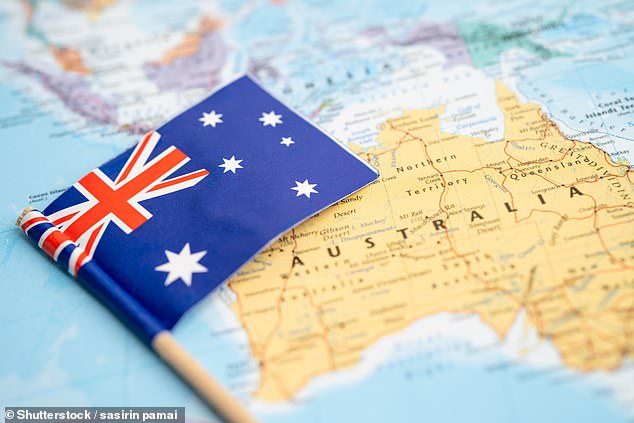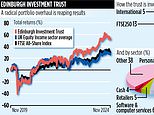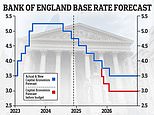I'm a retirement expert and visited Australia to see if pensions REALLY are better than in Britain
Mike Ambery is the retirement savings director at Standard Life. He visited Australia earlier this year to learn how pensions work there.
Australia – that distant country of Christmas barbecues, diverse (sometimes terrifying) wildlife, coral reefs and spectacular cityscapes.
The land Down Under holds a unique place in the UK's public imagination for its beaches and sunny weather, but has become increasingly associated in our industry with something quite different – its pensions model.
Sometimes held up as the panacea for all our pensions issues, Australian pensions are familiar in some ways but incredibly different in others to our own, much like the country itself.
So do Australian pensions deserve their reputation?
Last summer I travelled to Australia with three of my colleagues at Standard Life to meet key figures from Australia's defined contribution pensions world including CEOs and trustees.
The primary purpose of our visit was to build strong relationships with our Australian counterparts as well as finding out more about the strengths and weaknesses of their pensions model and comparisons that can be made with the UK.
Our sessions covered the structure of huge Australian pension schemes known as Superannuation schemes (Supers) and how private pensions intersect with state ones, as well as how many people use advisers to make decisions about their retirement and the options available.

Australia is known for Christmas barbecues, wildlife, coral reefs and spectacular cityscapes... but it's the pensions model that interests the UK finance industry
Are Supers super: How do private pensions work?
Australians do tend to engage with them – Supers and their performance are often a topic of social conversation, and they are advertised in prominent locations like on billboards and in stadiums.
It's clear that savings adequacy is a strength in Australia.
It has gradually increased minimum employer pension contributions to a higher level than the UK, and they will rise from 11.5 per cent this year to 12 per cent of salary from next July.
That compares to employers contributing a minimum of 3 per cent of your 'qualifying earnings' (which means the portion of your salary falling between £6,240 to £50,270) in the UK under auto enrolment.
In Australia, workers do not pay a personal contribution, while in the UK the minimum personal contribution is 5 per cent - including tax relief – of qualifying earnings.
This has enabled greater savings adequacy and a higher anticipated standard of living in retirement in Australia compared to the UK.
It's difficult to see a scenario in which minimum employer contributions would rise to quite as high a level as 12 per cent in the UK.
Instead, any future rise would likely be a mix of minimum employer and employee contributions.
This needs to happen to improve savings adequacy in the UK, and we hope to see it included in the government's upcoming review into pensions adequacy.
However, future changes should be made on an incremental basis, when the time is right for both employers and employees.
Understandably, there's a strong focus on the performance of Supers. They are subject to an annual performance test, which enables regular comparisons between Supers on a number of metrics, including investment performance.
If the test is not met for two consecutive years, funds will be penalised and effectively blocked from accepting further money and effectively exit the market.
Performance tests have led to increased consolidation, and while fees are generally higher in Australia than the UK to manage service sustainability, over the long-term consolidation has led to greater economies of scale which should help to bring them down.
In the UK, the Financial Conduct Authority has suggested a similar direction of travel via its Value for Money framework, which was consulted on earlier this year.
Superannuation Schemes are able to leverage the power of consolidation and economies of scale to boost domestic and global private market investment.
This has the potential to boost saver outcomes as well as supporting the economy through investment, and is similar to the structure proposed by Chancellor Rachel Reeves in her recent Mansion House speech.
Private market investment has been global as well as domestic – investment from Supers into Heathrow Airport, of which one Super, the Australian Retirement Trust, owns 11 per cent, the King's Cross area and UK offshore windfarms have benefited Australian savers.

Mike Ambery: It's difficult to see a scenario in which minimum employer contributions would rise to quite as high a level as 12 per cent in the UK.
Australia's state pension is means-tested
One of the biggest differences is the fact that in Australia the state pension is means-tested and much more complex to access than in the UK.
It provides for a minimum standard of living for the least wealthy pensioners, and is seen as more of a state benefit – unlike in the UK, there is no link to National Insurance contributions or similar for eligibility.
It goes without saying that a similar move here would prove immensely controversial. It's also hard to make direct comparisons between the UK and Australian state sector due to a number of fundamental differences.
For example, there's no inheritance tax and healthcare is funded differently too.
What can we do better in future?
Australia shares the UK's need for greater access to advice and personalised guidance before, during and after retirement.
In the UK, the FCA are looking to address this via their advice/guidance boundary review, and it looks like some really positive work is coming out of this including the potential for providers to offer 'targeted support', which would enable us to say 'this option could work for people like you.'
There's much we can learn from Australia, particularly when it comes to their strong focus on savings adequacy and the structure of Supers.
However, we shouldn't attempt a copy and paste between two very different countries and societies.














































































